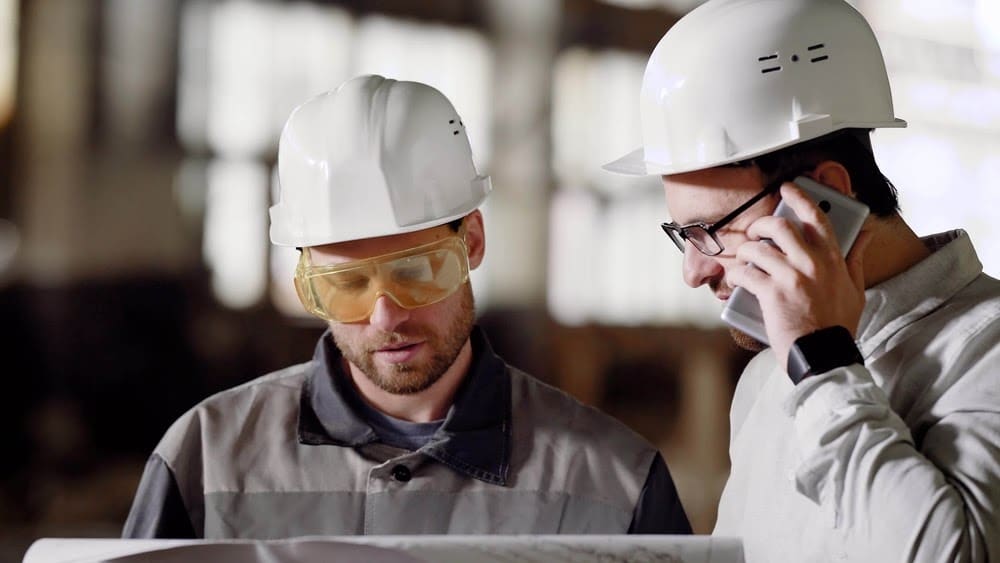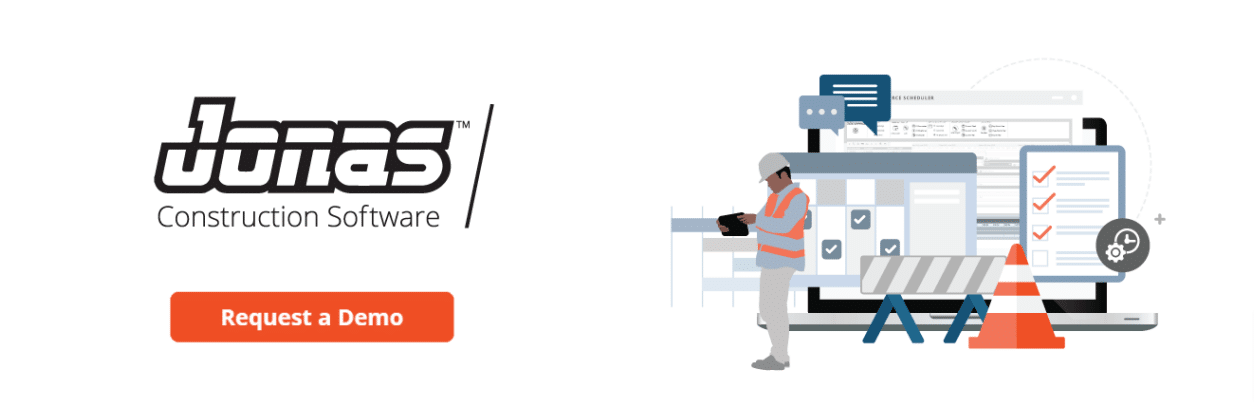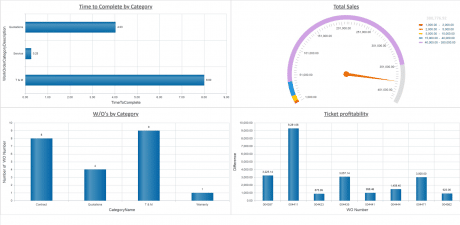Last Updated on July 17, 2023

Construction projects can be very complex and come with many challenges. That’s why managing a construction project is a big task for anyone in the construction industry. The last thing you want is to deal with a costly mistake that causes you to absorb the repair costs into your budget. While certain roadblocks are unavoidable, some problems in the project life cycle can be avoided with good planning.
In this article, we’ll examine the seven most common construction project planning mistakes. And because our goal is to help you succeed, we’ll offer you a solution for each.
Mistake #1: Unclear Project Scope

The cardinal rule of project management is to have a robust, finalized, and transparent scope of work. A poorly written and misunderstood scope statement is the number one reason for project problems. Also known as scope creep, unclear project scope leads to the waste of money, decreased satisfaction, and unmet project goals.
Among the common reasons for scope creep are:
- Lack of clarity and agreement to the original specification document.
- Customers trying to get extra work “on the cheap.”
- Lack of foresight and planning.
- Poorly defined initial requirements.
Without a defined scope of work, it’s impossible to know what work must be done and how. The first step to avoiding this mistake is to establish the scope that shows what tasks must be done, and who’s accountable for these tasks.
How to Avoid it: Follow a Clear Scope Development Process
A statement of work—sometimes called a scope of work (SOW)— is an essential element of a construction management plan that can make a great construction project even better. This can be a brief short document that includes the business need, the project vision, and high-level deliverables in and out of scope. Write an SOW that is clear, comprehensive, logical, and brief, so it can be understood by everyone involved.
In addition to writing a clear scope of work, go over it in detail with both your project team and your client—especially your client! Make sure everyone has the same expectations for the completed work.
With this document at hand, you will be better equipped to handle – or even avoid entirely – the next common mistake.
Mistake #2: Tight Project Schedule & Timelines
Project timelines and deadlines, along with cost, are the most important aspects of a construction project. To meet the deadlines, schedules are usually tight. Despite everyone’s best efforts, most construction projects experience some type of delay. Maybe the owner changes some aspect of the project, a design problem occurs, or project milestones are delayed.
Yes, that happens. What’s your best course of action?
How to Avoid it: Leave “Wiggle Room”
Planning is the single most important phase of the project and gives you your best shot at successfully executing a project within a tight deadline. It’s always best to identify the root causes of delays as soon as possible. Address the issue before the delay dramatically increases project costs and causes a lengthy deadline extension. The coordination of a well-constructed construction plan includes provisions for justified delays and an outline of how to handle them.
Mistake #3. Inaccurate Job Cost Estimates
Estimating cost baselines is one of the most difficult jobs in construction. It is also one of the most important. A study shows that 18% of the large engineering projects incurred significant cost overruns. For your construction business, cost overruns mean that you won’t make a profit.
There are a lot of variables that must be accounted for to deliver accurate estimates on every project. Everything must be nearly perfect, from capturing accurate labor and resources costs to factoring in items like risk contingencies and overhead.
How to Avoid it: Use a Job Costing Tool
Tracking job costs on a project with a construction-specific job costing tool is a great way to ensure your estimates. For subcontractors, it may be a simple breakdown of material and labor. Service providers, like electricians or plumbers, could have several lines for fixtures, equipment, transmission, controls, and more. Don’t forget to include items like increased insurance limits and administrative costs.
A job costing estimate plays a vital role in customer satisfaction. Getting accurate estimates is no easy task and a good job costing software is worth its weight in gold.
Mistake #4. No-Risk Management Plan
A comprehensive risk management plan is a ‘must have’ in your construction operations. Should a risk occur, construction project risk assessment allows you to ensure that every necessary step was taken to remedy the situation in the best possible manner.
Based on your previous projects, you can amend your best practices to make them more effective in the future, in case similar risk factors arise.
How to Avoid it: Identify Potential Project Risks & Plan How to Address Risks Should They Occur
Project risks can be significantly minimized with the help of the right project management plan and software tools. Digital solutions help better collect and analyze data to predict and mitigate project risk more easily.
Mistake #5. No Communication Plan

Even when projects enjoy smooth sailing, everyone involved needs to know what’s going on. Projects often run aground when project managers aren’t communicating frequently and transparently with the team and the client. According to the Project Management Institute (PMI), poor communication is the primary reason why projects fail nearly 30% of the time.
What are the main obstacles? Inconsistent, incomplete, unclear, delayed reporting is just one route that can lead to communication mistakes. Communication bottlenecks can occur on the construction site and in the office, causing project delays and cost overruns.
How to Avoid it: Identify Communication Channels, Frequency, & Expectations
A study published in the Harvard Business Review discovered that face-to-face conversations and social interactions increased engagement, employee satisfaction, and productivity. In practice, this means planning weekly team meetings and being diligent about sticking to them, each week and on time.
This also means providing your client with regular status reports. A robust reporting feature of construction management software makes creating reports a snap.
Real-time communication is always better when it comes to keeping everyone involved on the same page. Construction project management (CPM) software helps set up this flow of communication by becoming one location for project planning and documentation. Your contractors and stakeholders can reference the project plan, check comments, view correspondence, and monitor status, budgets, and changes as they happen.
Faulty communication may also lead to problems with stakeholder engagement. This is why the next mistake is way too common.
Mistake #6. Lack of Buy-In from Project Stakeholders

Stakeholders are critical to project success. It is estimated that 1 in 3 projects fail due to inadequate stakeholder engagement. Failure to communicate regularly with stakeholders can undermine internal support for your project.
Buy-in can be difficult to quantify, but without full buy-in from team members and other stakeholders, projects may abruptly take a turn for the worst. The absence of stakeholder buy-in can easily turn a multi-million dollar investment into a very expensive lesson about resistance to change.
How to Avoid it: Ensure Project Stakeholders are Involved in Project Management Planning
You can take the following steps to improve buy-in:
- Choose one person on your team who is “on the hook” for stakeholder buy-in.
- Conduct interviews or surveys to understand stakeholder concerns as well as identify potential pockets of resistance.
- Document specific actions senior leaders can take to ensure buy-in at all levels of the organization. Set up town hall meetings or provide step-by-step instructions.
- Measure your progress and conduct stakeholder interviews and surveys throughout your project. This way, you will see what’s working and what’s not, so you can make adjustments along the way.
You may want to categorize stakeholders based on interest, influence, impact, and expectations. Once the project is underway, you’ll monitor and adjust stakeholder communications to increase support and minimize any resistance to the project.
Mistake #7. Not Taking Advantage of Construction Project Management Software
Sometimes, one-size-fits-all project management tools may not fully meet the needs of different types of construction projects. When multiple tools are used, things can get messy and delayed. One lost email can put the entire project on hold. And when the team is not operating off the same set of information, things can get sketchy. Identifying small cost problems becomes a hassle, and communication on multiple, isolated channels can get muddled.
How to Avoid it: Use Jonas Construction Software to Plan Your Construction Projects
The benefit of Jonas Construction Management Software is it manages all aspects of a construction project. All of the communications, RFIs, schedules, documents, and more are housed in one single location. Keeping a birds-eye-view of where every project is at any given moment is much easier. Jonas Construction Management Software helps make managing projects and staying within a timeline much more straightforward and manageable.
Another benefit of planning a project in a construction-centric project management software such as Jonas is vastly improved internal communication and flexibility. Project managers can quickly import contacts, monitor emails, and communicate effortlessly with other team members or customers. To streamline document management, they can upload and share field notes and create daily reports. Working in sync, Jonas Construction Management Software modules improve and streamline every part of project-related communication.
Construction mistakes happen, but they can get costly–and fast. By avoiding these mistakes, project managers can help decrease the financial outcomes to their companies associated with these obstacles. When you implement these suggestions, you’ll have a robust basis for delivering a successful project. And that’s what we all want.







